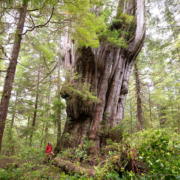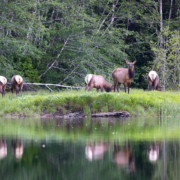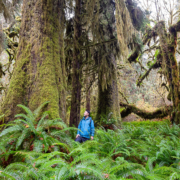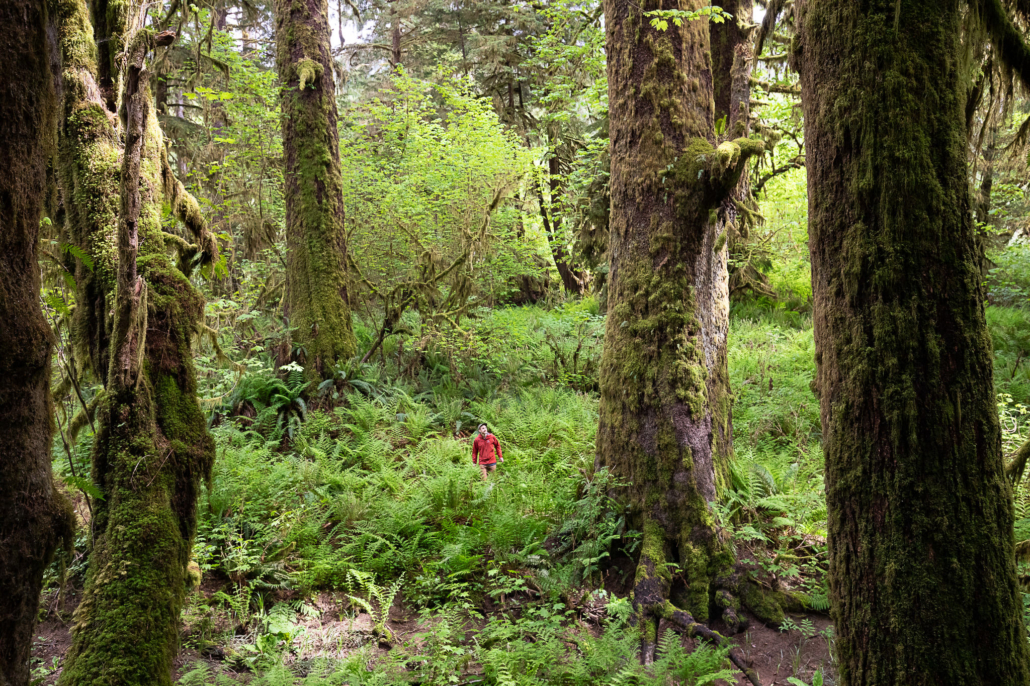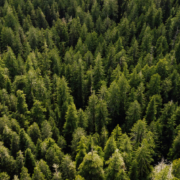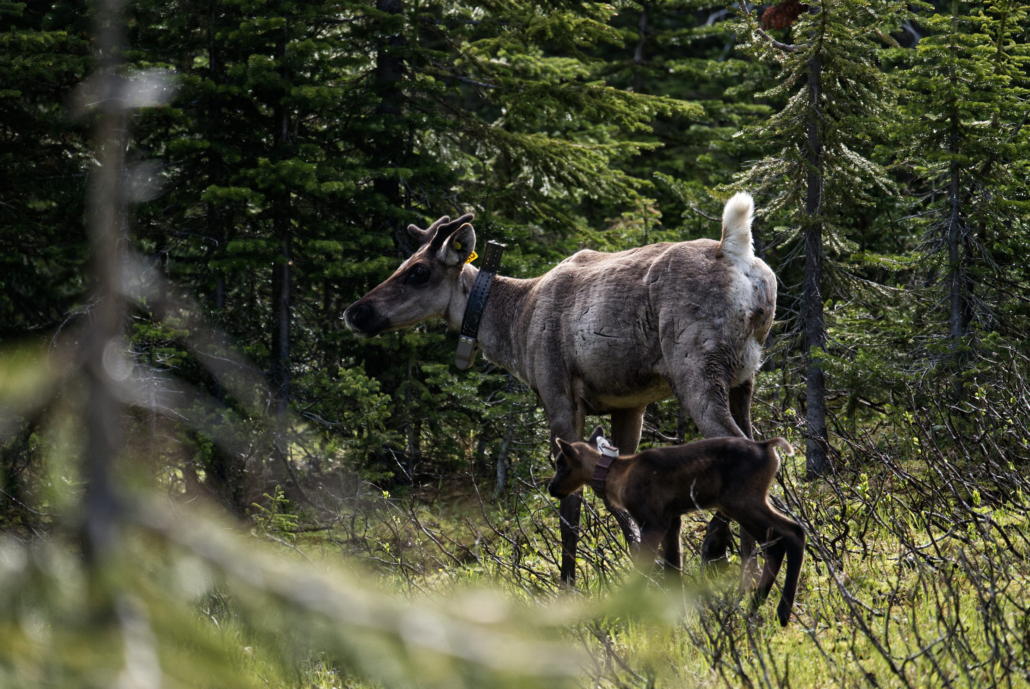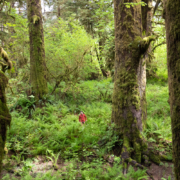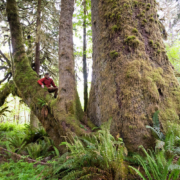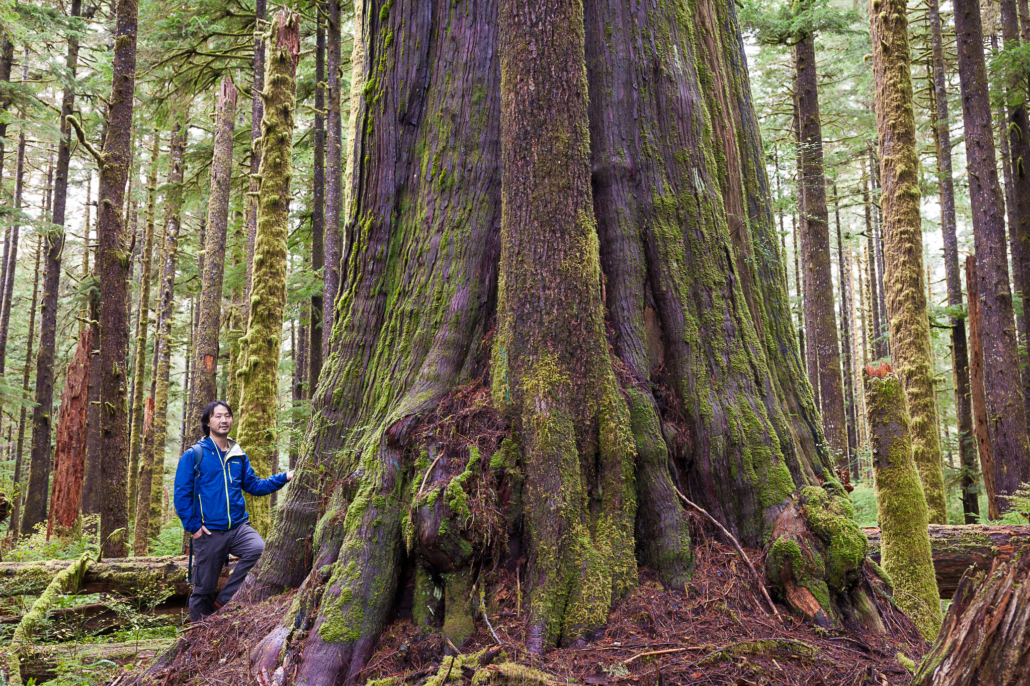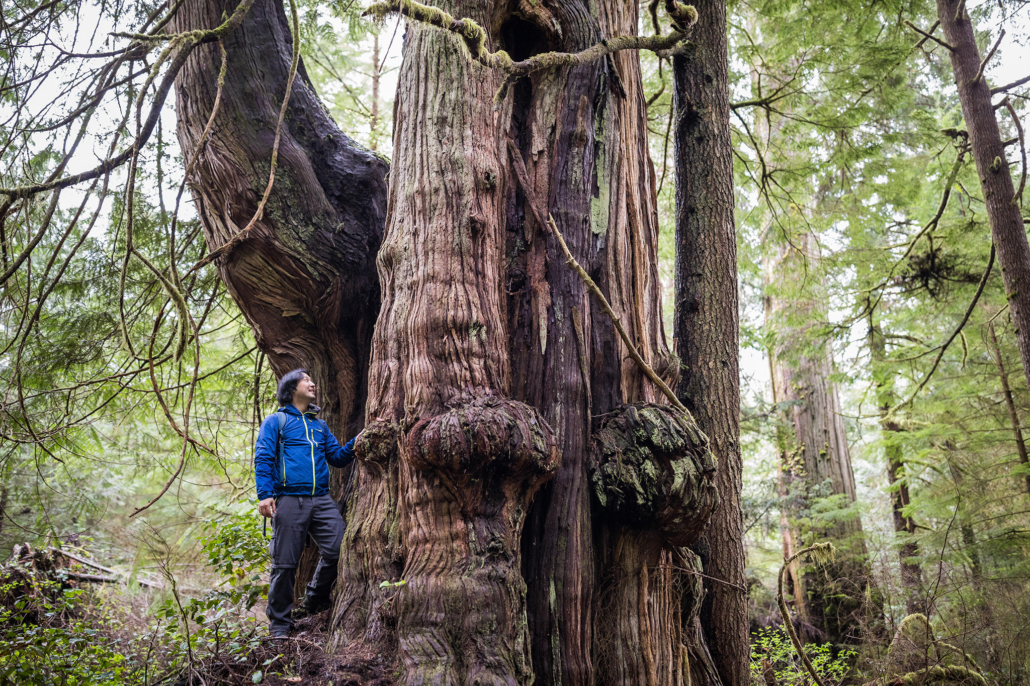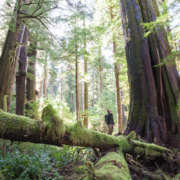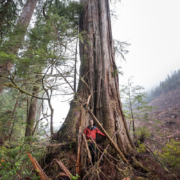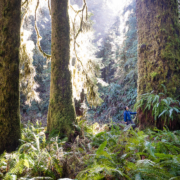CBC Radio — “On The Island with Gregor Craigie”: Interview with Ken Wu
November 16, 2023
CBC Radio: On the Island with Gregor Craigie
Listen to this stellar interview with Endangered Ecosystems Alliance’s Ken Wu, who speaks about the significance of the BC government’s recently released draft Biodiversity and Ecosystem Health Framework.
Listen to the full interview, or view the transcript below:
Gregor Craigie:
Another piece of the province’s plan to protect endangered old-growth forests was announced yesterday. The new draft Biodiversity and Ecosystem Health Framework follows last month’s creation of a $300 million fund to purchase and protect natural spaces as parks or protected areas.
BC Water, Land and Resource Stewardship Minister Nathan Cullen says the latest initiatives will help the province protect 30% of its land base by the year 2030. For more on the significance of the biodiversity framework, we’re joined by Ken Wu, Executive Director of the Endangered Ecosystems Alliance. Ken, good morning.
Ken Wu:
Thanks for having me on.
Gregor:
Thanks for joining us. First of all, what exactly is a Biodiversity and Ecosystem Health Framework? It’s a long title. And how is it a significant development for delivering the government’s promise to protect old growth?
Ken:
So this is a potentially revolutionary game-changer for conservation in Canada. Ff it comes out right, it will essentially target protection and conservation measures for the most endangered and least represented ecosystems in British Columbia. Ecosystem-based protection targets are what have been lacking not only in British Columbia but across most of the world. So it’ll essentially save the big trees instead of primarily saving alpine and sub alpine areas with small trees or no trees, as it is typically being the history of protected areas in BC.
It’s a huge game changer if it comes out right when it’s finalized in a few months.
Gregor:
So if I hear you correctly, Ken, it sounds like it’s recognizing quality rather than just quantity. You’re not just counting old trees but looking at the the quality and the age and location, and so on, of them.
Ken:
That’s right. So basically, BC has got a target to protect 30% of its land area by 2030. But if you don’t have specificity for the diversity of ecosystems with protection targets for them, then what happens, what has always been happening, and which will continue to happen, if this doesn’t land right, is saving the areas with low to no timber values.
The dominant paradigm, the paradigm that is supposed to be shifted as a result of the government’s Old Growth Strategic Review panel. The dominant paradigm has basically been to minimize impacts on the available timber supply for the logging industry from any conservation measures.
This [framework] turns [the old paradigm] on its head. It basically says that first, you have to conserve and protect the diversity of ecosystems that also includes the the areas that have been most coveted by industry. If the government does this, it is really a huge game changer.
Gregor:
Ok. And how does this draft framework fit in potentially with last month’s announcement from the province of this $300 million for conservation financing for endangered ecosystems?
Ken:
So the combination of the province’s $300 million conservation financing announcement with 1.1 billion of the Federal Provincial Nature Agreement is basically the fuel; it powers up the expansion of the protected area system by supporting First Nations in their initiatives for Indigenous Protected and Conserved Areas (IPCA) (is a bit of a mouthful) as well as for land acquisition for a diversity of approaches to protect ecosystems.
It basically means not only are you going to expand protected areas but you’ll place them in the places, hopefully that are the most impacted by industry and the least represented in the existing protected areas system.
Gregor:
So it targets protection to where it really needs to go, and forgive me if it’s obvious Ken, but has the work of identifying where needs to be targeted first and, you know, prioritizing those targets — has that been done?
Ken:
It’s probably been done through the Technical Advisory Panel, that’s the government’s science panel that it struck up a couple of years ago to identify the most at-risk old growth, but that’s an old-growth focused panel.
We want to make sure the province doesn’t jettison its results because there are some in the bureaucracy that try to creep away from that. But there needs to be a bigger set of analysis that has to be done. [The government is] going to be appointing a Chief Biodiversity Officer who will then strike up science teams, Traditional Ecological Knowledge committees, and First Nations committees to then build targets to span the diversity of ecosystems.
Now, the issue is whether or not it will have a fine enough filter because if [the government] doesn’t target ecosystems, specifically enough there, then you still have the loopholes where you can basically save the bogs instead of the big trees where you can still save the high elevations and the low elevation. So it’s got to be fine filter enough to capture all the ecosystems including forest productivity gradients, big trees versus medium trees versus small trees, depending on the soil and the climate. And it’s got to be large scale enough based on the latest science and conservation biology that says you’ve got to protect quite a lot of these landscapes, these ecosystems, to maintain all the species and the processes, predator-prey relationships, hydrological, watershed integrity.
Gregor:
All these type of things you mentioned — loopholes — are there examples whether it’s here on the island or elsewhere in the province where loopholes and arrangements like the Old Growth Management Areas have been exploited to allow for more logging of endangered trees?
Ken:
So this keeps coming up, right? So basically, there’s two basic sets of ways you can save or safeguard ecosystems. One of them are the legislated protected areas, the hard protected areas and they’re bigger typically. So that’s like provincial parks. Provincial conservancies is a newer designation that is congruent with First Nations’ subsistence uses, co-management, and rights and title. So those are the big [designations] that exclude logging, mining oil and gas.
Then you’ve got a whole forest reserve conservation reserve labyrinth, Old Growth Management Areas, Wildlife Habitat Areas, visual quality objectives, riparian management zones — all these different kinds of designations. Some of them are weak and tenuous old growth management areas.
You can take out pieces under industry, then lobby and log those. And it happens all the time, by the way, just like like it happens hundreds, probably thousands of times across the province. So it’s a common occurrence and we’ve dealt with it in the Port Renfrew area over the years.
Gregor:
And so the devil is clearly in the details, but if it does live up to its potential, what you hope is, is coming. What do you think it would mean for some of the more contentious old-growth logging areas, like the Fairy Creek situation?
Ken:
So basically, it has to be obviously stitched together with the conservation financing mechanism. These can’t be two parallel policies that are not connected, right?
So, that’s a key thing to make sure, is that basically all this money now to power the expansion of protected areas is guided by ecosystem-based targets to make sure the deployment of those funds is [allocated] to get the most endangered and least represented ecosystems, and that could result in the protection of Fairy Creek and other high-productivity and most at-risk old growth across BC.
But in the end, it’s really important, [and it’s something] that the environmental movement doesn’t seem to quite grasp, which is that the BC government can’t unilaterally just “save the old growth.” Because of successive court rulings, not only does it require First Nations’ consent, but First Nations’ shared decision making in any legislated land-use changes on their territories is required if you’re going to save old growth and endangered ecosystems. And so the protection moves at the speed of the local First Nations whose territory it is on.
The funding can facilitate that because many First Nations have a lack of capacity and also a dependency on old growth timber industry, jobs and revenues. The conservation financing can support alternative industries while at the same time paving the path for new Indigenous Protected and Conserved Areas. So all of it can work together.
We don’t have it yet, by the way, the Biodiversity and Ecosystem Framework is high level, it doesn’t have the legislation yet. It’s not official.
There’s a few more months yet of public input, but we are going to push hard because if we can combine the two: the funding to power protected areas expansion and the ecosystem-based targets to save the most endangered areas, then we will have a world-class protected-areas system, and BC will lead the world in conservation policy there.
Gregor:
Are you optimistic at this point, Ken, that that will happen in the coming months?
Ken:
It always takes work, right? Premier Eby, I want to give him thanks, I want to give him crystal clear thanks that he’s moving things forward much quicker than any other previous premier has. And he’s a lot bolder, along with Steven Guilbeault, federally, the Environment Minister.
It is fueling the expansion of the protected areas system across Canada. And we will see, I’m certain, in the ensuing months and years, a massive unprecedented expansion of the protected areas system in BC. So I’m optimistic.
There’s going to be an election in the fall of 2024 and they will want to have this come out, I think, if they don’t want to bleed support to the Greens and this is something that I get a sense that Eby, personally, wants to make this happen.
Gregor:
Well, Ken, I appreciate you taking the time.
Ken:
It’s good to talk to you again.
Gregor:
Thanks very much.
Ken:
Hey, thanks for having me on again.
Gregor:
Ken Wu is executive director of the Ancient Forests Alliance. It’s 22 minutes after seven. This is “On The Island.”


